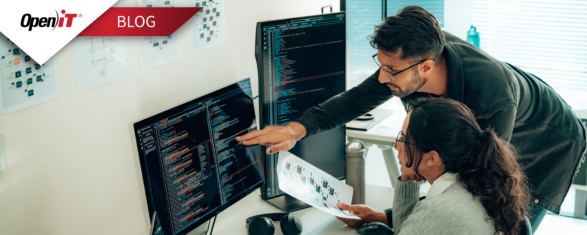Software portfolios have grown more complex and usage patterns have evolved across hybrid IT environments. Effective software asset management (SAM) now requires more than traditional tools and manual processes. To address these issues, artificial intelligence (AI) and machine learning (ML) are now being applied to SAM to improve accuracy, reduce workload, and support data-driven decisions.
At IAITAM ACE 2025, David Boyle, Partnership Manager at Open iT, will present “Optimizing Software Asset Management with AI and Machine Learning” at Mesina 1, The M Resort, Las Vegas, NV, on April 23, 2025, from 11:15 AM to 12:15 PM.
This technical session will delve into how advanced AI and ML are reshaping SAM practices in real-world enterprise environments.
The Role of AI and ML in Modern SAM
As license models evolve, and software usage becomes harder to track—especially in cloud and hybrid deployments—SAM professionals are increasingly relying on data science techniques to improve visibility and control. AI and ML offer a way to move from reactive compliance reporting to proactive license optimization and forecasting.
David Boyle’s session will break down practical applications of AI and ML in SAM, emphasizing how these technologies can be integrated with existing systems and processes to enhance accuracy and decision-making. The presentation will focus on three core technical outcomes:
1. Identifying and Reallocating Underutilized Licenses
A core capability of AI in SAM is its ability to process and correlate large volumes of usage data from various sources—license managers, end-user behavior logs, cloud dashboards, and application metering tools. Through advanced pattern recognition and clustering algorithms, AI can pinpoint licenses that are chronically underutilized or entirely dormant.
These insights enable precise reallocation strategies. Rather than performing broad license reductions that could risk operational disruptions, organizations can surgically decommission or reassign assets based on actual consumption trends. This allows for continuous optimization of software entitlements while maintaining compliance and availability.
2. Improving Budgeting and Demand Forecasting
Budget forecasting in SAM has traditionally relied on historical consumption reports and stakeholder estimates. However, these approaches are often limited in accuracy due to fragmented data and unpredictable user behavior. Machine learning overcomes these limitations by uncovering latent trends and seasonality in license usage that are not obvious through standard analytics.
ML systems can forecast license demand across departments and time horizons with high granularity. This enables more confident procurement planning, facilitates cost-saving negotiations during renewals, and reduces the risk of over-purchasing or under-provisioning critical tools.
Additionally, ML can account for external variables such as project timelines, workforce fluctuations, or software lifecycle events, further refining predictive accuracy.
3. Reducing Manual Overhead Through Automation
Routine compliance tasks, such as license reconciliations, audit preparation, and policy enforcement, traditionally demand substantial human effort and are prone to errors or delays. AI introduces scalable automation to these workflows, drastically reducing manual intervention.
For instance, natural language processing (NLP) models can interpret complex licensing agreements and match them against usage logs to ensure compliance. AI can also automate license harvesting—identifying and reclaiming inactive licenses without administrative involvement.
By automating these time-intensive processes, organizations free up SAM and ITAM professionals to focus on high-value initiatives such as software lifecycle optimization, vendor strategy, and digital transformation alignment.
Join David Boyle at IAITAM ACE 2025
David Boyle has extensive experience working with global organizations to improve visibility into software usage and ensure optimal allocation of high-value engineering and enterprise software. At Open iT, he focuses on partnerships and integration strategies that align with emerging technologies, including AI and cloud-native analytics.
His session is grounded in real-world implementation scenarios and is designed for practitioners who want to take a more data-driven approach to managing software assets at scale. Attendees of David Boyle’s session can expect a practical overview of AI/ML applications in SAM, along with examples of integration strategies and lessons learned from real deployments.
Join David Boyle on April 23, 2025, from 11:15 AM to 12:15 PM at Messina 1, The M Resort, Las Vegas, for a deep dive into how AI and machine learning are reshaping Software Asset Management.
While you’re there, stop by Booth #42 to connect with the Open iT team and learn how data-driven insights into license usage can support smarter cost control, improved transparency, and more strategic SAM decisions, especially in today’s increasingly complex IT environments. We look forward to engaging in discussions at IAITAM ACE 2025






